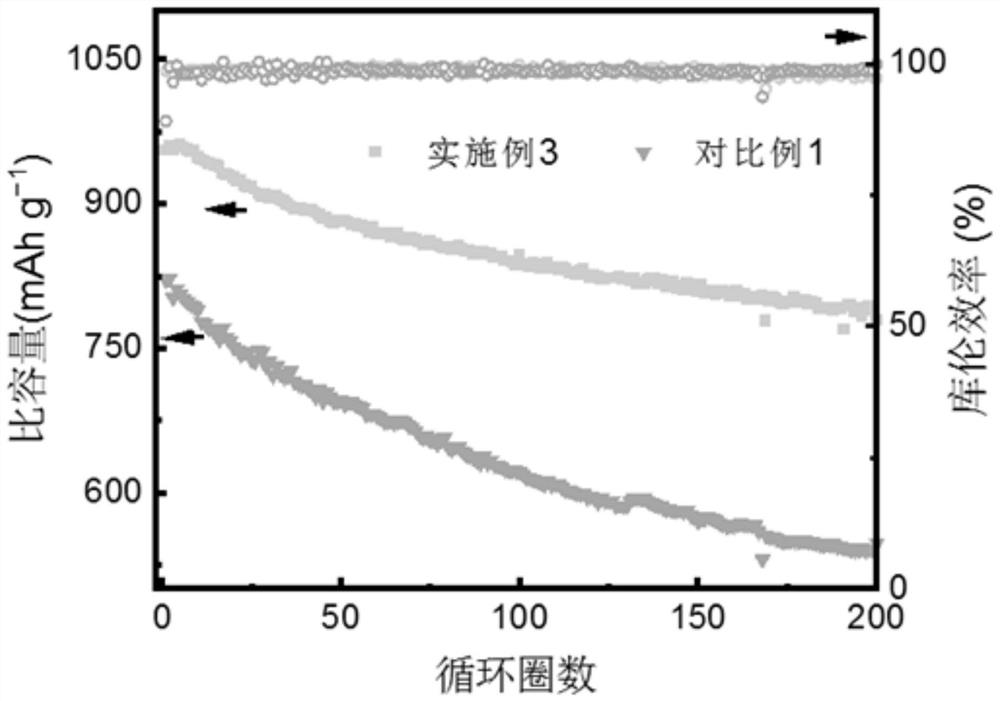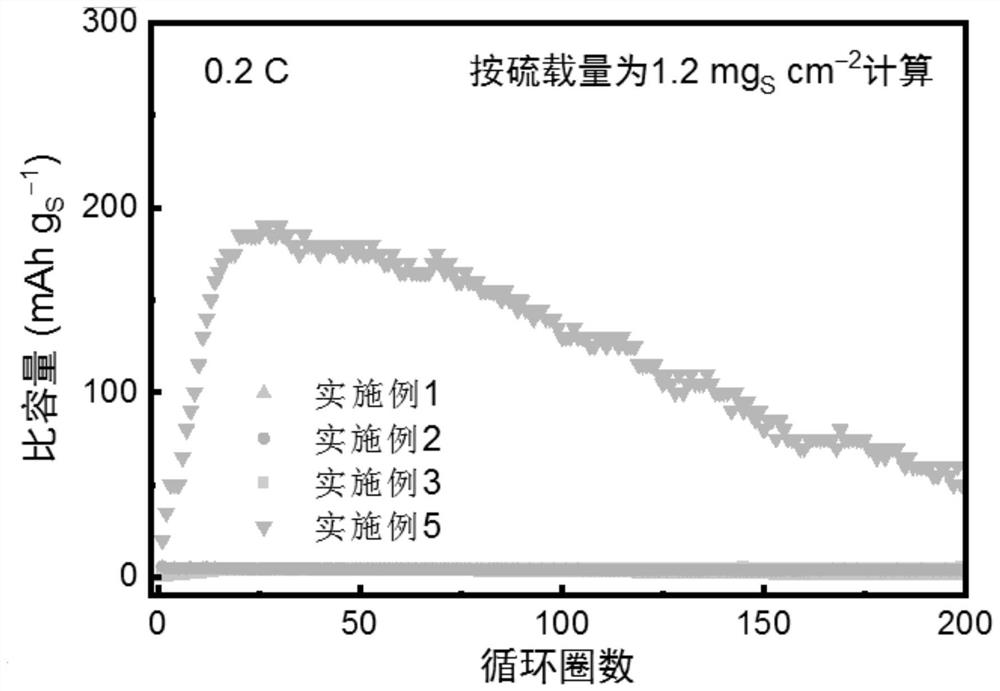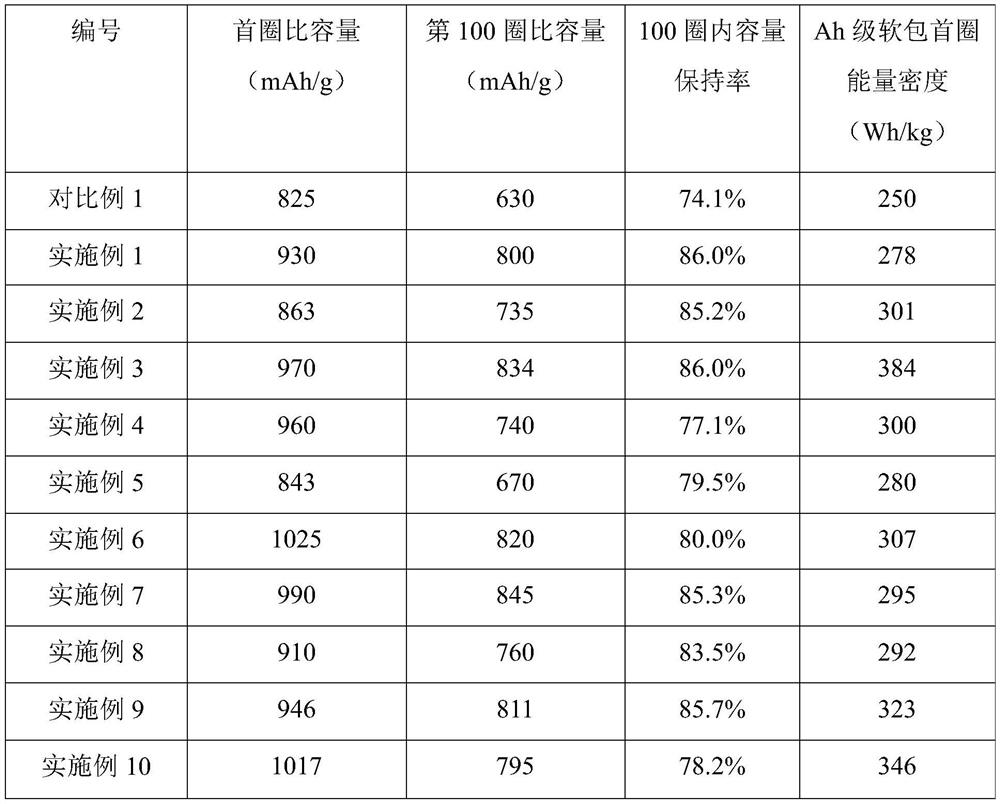Lithium-sulfur battery electrolyte and preparation method thereof
A lithium-sulfur battery and electrolyte technology, applied in the field of energy chemistry, can solve problems such as hindering the performance of Li-S batteries, inhibiting the conversion kinetics of sulfur species, and uneven precipitation activation energy, so as to improve the overall performance and high reactivity , the effect of improving the utilization rate
- Summary
- Abstract
- Description
- Claims
- Application Information
AI Technical Summary
Problems solved by technology
Method used
Image
Examples
preparation example Construction
[0035] A method for preparing a lithium-sulfur battery electrolyte, the steps are as follows: under the protection of an inert gas, add a lithium salt to an organic solvent or a mixed organic solvent, then add a high-activity additive, stir well and evenly, and obtain the lithium-sulfur battery electrolyte ; The inert gas is at least one of nitrogen, helium and argon; the water content in the inert gas is <0.1ppm, and the oxygen content is <0.1ppm.
[0036] Lithium-sulfur battery electrolyte used in lithium-sulfur batteries. The lithium-sulfur battery includes a positive electrode sheet, a negative electrode sheet, a separator, and the lithium-sulfur battery electrolyte; the positive electrode sheet includes a positive electrode active material, a conductive agent, a current collector, and a binder; the negative electrode sheet includes a negative electrode active material and a binder. The positive electrode active material includes lithium sulfide and elemental sulfur. The ...
Embodiment 1
[0039] 1) Preparation of electrolyte
[0040] DOL and DME are mixed at a volume ratio of 1:1 to obtain an organic solvent;
[0041] Add LiTFSI and LiTfO to the organic solvent, and the concentrations of LiTFSI and LiTfO in the mixed solution of the organic solvent and the electrolyte salt are 1mol / L respectively; then add the additive LiNO 3 , LiNO 3 The mass fraction in the whole mixing system is 2wt%;
[0042] Finally, dimethyl diselenide was added, and its concentration in the mixed solution was controlled to be 50 mmol / L, which was the lithium-sulfur battery electrolyte of Example 1.
[0043] 2) Preparation of lithium-sulfur battery
[0044] Install the positive electrode sheet, electrolyte, separator, and negative electrode sheet in order, let it stand for 6 hours, discharge it to 1.7V with a constant current of 0.5C, and then charge it to 2.6V at a constant current to complete the preparation of the lithium-sulfur battery.
Embodiment 2
[0046] Electrolyte preparation
[0047] DOL and DME are mixed at a volume ratio of 1:1 to obtain an organic solvent;
[0048] Add LiBr and LiI to the organic solvent, and the concentrations of LiBr and LiI in the mixed solution of the organic solvent and the electrolyte salt are 1mol / L; then add the additive LiNO 3 , LiNO 3 The mass fraction in the whole mixing system is 2wt%;
[0049] Finally, diphenyl diselenide was added, and its concentration in the mixed solution was controlled to be 0.1 mmol / L, which was the lithium-sulfur battery electrolyte of Example 2.
[0050] The electrolyte was used to assemble a lithium-sulfur battery; the processes and parameters not indicated in this embodiment were the same as in Example 1.
PUM
 Login to View More
Login to View More Abstract
Description
Claims
Application Information
 Login to View More
Login to View More - R&D
- Intellectual Property
- Life Sciences
- Materials
- Tech Scout
- Unparalleled Data Quality
- Higher Quality Content
- 60% Fewer Hallucinations
Browse by: Latest US Patents, China's latest patents, Technical Efficacy Thesaurus, Application Domain, Technology Topic, Popular Technical Reports.
© 2025 PatSnap. All rights reserved.Legal|Privacy policy|Modern Slavery Act Transparency Statement|Sitemap|About US| Contact US: help@patsnap.com



